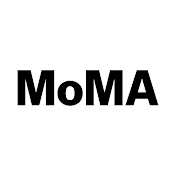
Self-Portrait
ca. 1900-1903
Henri Rousseau (le Douanier)
French, 1844-1910
European Art
This self-portrait, which displays the odd spatial disjunctions and flat tones typical of Henri Rousseau’s work, is likely the pendant to a portrait of the artist’s first wife, who died in 1888.
Self-taught, Rousseau did not start painting full-time until he was in his forties, shortly before he retired from his job as a customs officer. He showed his paintings at various independent exhibitions in Paris and became an important influence for vanguard artists, who appreciated the simplicity of his vision, often described at the time as “primitive.” Pablo Picasso was a particular fan and owned several of Rousseau’s works, including a similar set of portraits of Rousseau and his second wife posed with oil lamps instead of flowers.
Self-taught, Rousseau did not start painting full-time until he was in his forties, shortly before he retired from his job as a customs officer. He showed his paintings at various independent exhibitions in Paris and became an important influence for vanguard artists, who appreciated the simplicity of his vision, often described at the time as “primitive.” Pablo Picasso was a particular fan and owned several of Rousseau’s works, including a similar set of portraits of Rousseau and his second wife posed with oil lamps instead of flowers.
- Maker/Artist
- Rousseau, Henri
- Classification
- Painting
- Formatted Medium
- Oil on paper mounted to canvas
- Locations
- Place made: France
- Dimensions
- 7 3/8 x 5 3/4in. (18.7 x 14.6cm) frame: 11 3/4 x 10 1/4 x 1 7/8 in. (29.8 x 26 x 4.8 cm)
- Departments
- European Art
- Accession Number
- 67.24.14
Have a concern, a correction, or something to add?














